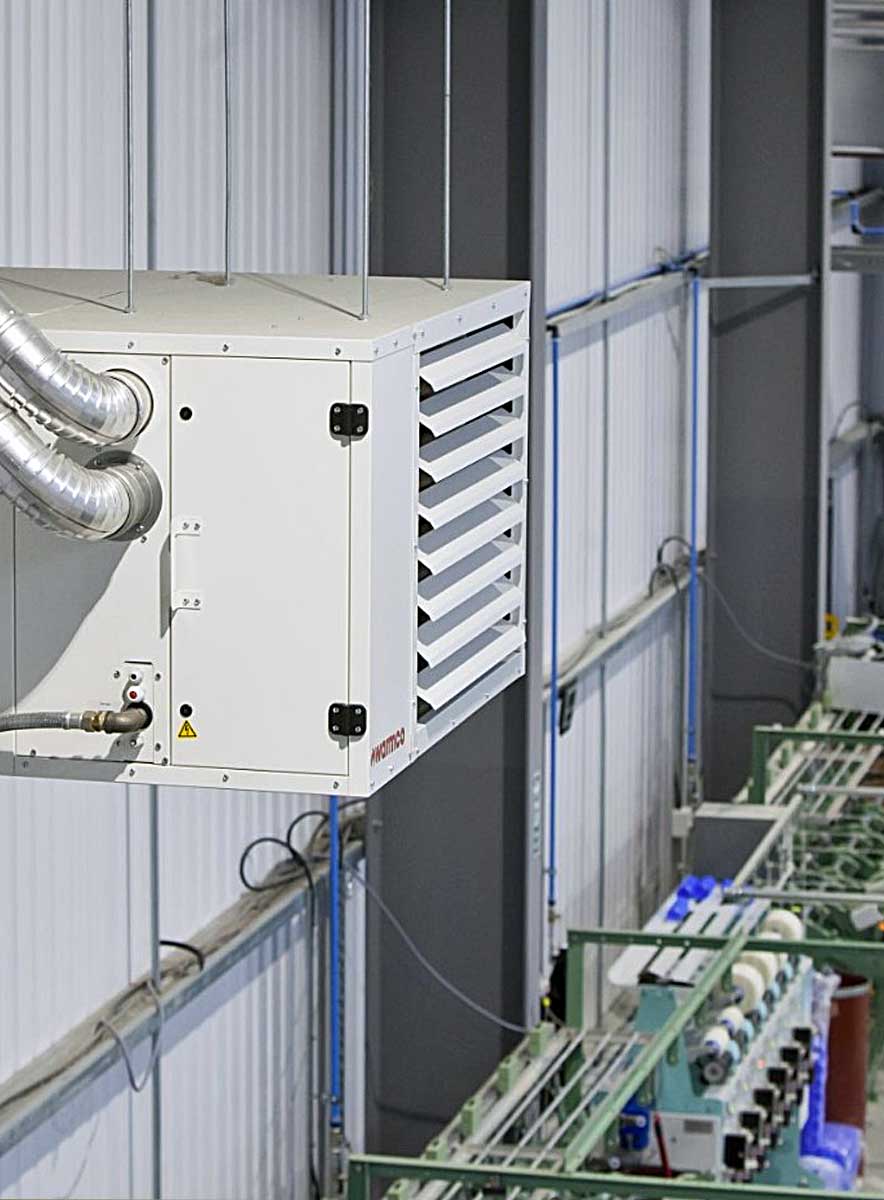
Warm air heating
Warm air heating is a popular heating system used in commercial buildings to provide warmth and comfort for the occupants of the buildings. It operates by distributing heated air throughout the building using a network of ducts and vents. Here’s an overview of how commercial warm air heaters work and their key features:
- Unit space heating: Commonly used in workshops, factories, gyms, warehouses and large retail units, these are predominantly gas or LPG fired heaters firing into a het exchanger with an auxiliary fan to blow the warm air into the required area.
- Air Handling Unit (AHU): The heart of a warm air heating system is the Air Handling Unit. The AHU consists of a fan, a heating element (e.g., heat exchanger or electric coils), and air filters. The fan draws in air from the building, passes it over the heating element to warm it up, and then forces the heated air into the ductwork.
- Ductwork and Vents: The heated air is distributed throughout the building via a network of ducts. The ducts can be made of galvanized steel, fibreglass, or other materials. Vents or registers, located in each room or area, allow the warm air to be released into the space. The ductwork is carefully designed to ensure an even distribution of warm air throughout the building.
- Control Systems: Warm air heating systems are typically equipped with thermostats and control panels. These allow building occupants to adjust the temperature to their desired level. Modern systems may incorporate programmable thermostats, zoning controls, and smart controls including Building Management Software (BMS) for enhanced energy efficiency and comfort.

Key Benefits
The key benefits of Warm Air Heating for Commercial Buildings:
- Quick Heating: Commercial warm air heaters can provide rapid heating, quickly raising the indoor temperature to a comfortable level.
- Even Distribution: The forced-air distribution method ensures an even distribution of warm air throughout the building, eliminating cold spots and maintaining a consistent temperature.
- Flexibility: Warm air heating systems can be integrated with existing ventilation systems, providing both heating and cooling capabilities in one system.
- Cost-Effective: Warm air systems are often cost-effective to install and operate, particularly when using efficient heating sources such as heat pumps or natural gas furnaces.
- Air Filtration: The air handling units often include air filters, which can help improve indoor air quality by removing dust, allergens, and pollutants from the air.
- Zoning Capability: With the use of zoning controls, different areas or floors of a commercial building can be independently controlled for heating, allowing for energy savings and customized comfort.

Infrared Heating
An increasingly popular alternative to warm air heating for commercial buildings with high ceilings is infrared heating which only heats objects and people. Installation and maintenance costs can be much lower than for warm air heating.
It’s important to consult with heating professionals and engineers to determine the appropriate warm air heating system for a specific commercial building, as the design and capacity requirements can vary based on factors like building size, insulation, climate, and occupant needs. Once the design is agreed, it’s important to select the right company to install and them maintain your commercial heating system. Read more about how Fairburn Heating Solutions can help with the design, installation and maintenance of your commercial heating system.